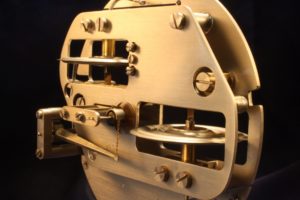The decline in the antiques trade, particularly noticeable post the crash in 2008, might be a wholly unnatural phenomenon.
Without collectors (buyers), business for dealers becomes very thin – however, it is odd that, as hunter-gatherers, the two most basic instincts lodged deep within the human psyche seem almost to have been extinguished. But have they?
Of course, hunting has been largely replaced in sport: the chase, the honing of hand-eye coordination all present within a rugby or football match, or athletics meeting. But what about the gathering part, which had, until recent times, been reflected very much in collecting, a pastime which can take on many forms: from the physical tangible object to the less obvious which might be the memories of holidays and the increasing number of trips that we make abroad?
The latter, though an important excursion in our lives, is surely not satisfactory in terms of what a collector-gatherer requires: a physical object which he or she might find attractive and interesting and has probably had to wear out many pairs of shoes to find.
The major impediment to any prospective renaissance in collecting is the pool of knowledge that one requires to pursue a particular subject, be it paintings, ceramics, militaria and so on. On that note, the future might seem particularly gloomy, but actually, on examination, whereas the finer and more intellectually interesting antiques, with some exceptions, may never again surface, potentially highly collectable technology might be a door waiting be properly opened. Many objects might be referred to as ‘technological,’ from computers and cameras, to scientific instruments and even the media upon which music might be recorded – vinyl records and cassette tapes.
 The key here is that all of us are surrounded by technology all day long and, although many of us might be surprised to know it, we are actually all technocrats to varying degrees. Most of us are therefore capable of picking up any item of technology and, after a relatively short period of time, able to form a reasonable understanding of its purpose and function.
The key here is that all of us are surrounded by technology all day long and, although many of us might be surprised to know it, we are actually all technocrats to varying degrees. Most of us are therefore capable of picking up any item of technology and, after a relatively short period of time, able to form a reasonable understanding of its purpose and function.
This makes an entree into collecting technology an easy path. Many of these objects have practical applications coupled with good aesthetics, are relatively easily shipped, and do not consume large amounts of space within the home. It is also true that they carry with them history, endeavour and the ingenuity of mankind. What could be more collectable?